Enab Baladi‘s Investigation Team
Murad Abdul Jalil – Ahmed Jamal – Haba Shehada
It has not been six months since the settlement agreement was concluded in the governorate of Daraa in southern Syria, when demonstrations broke again at al-Omari Mosque square located in the center of the province. People were protesting against the regime, which was previously removed, but then returned under the settlement agreement.
Al-Omari demonstration, which broke in December 2018, was in rejection of security measures imposed by the Syrian regime, most of which were under the control of the opposition factions between 2012 and 2018.
Al-Omari demonstration was followed by other protests coinciding with the anniversary of the Syrian revolution in March 2019. These protests expressed resentment against attempts to erect a statue of Hafez al-Assad and the deteriorating services, as well as campaigns destined for military recruitment and repeated arrests, detaining around 380 people since the settlement agreement was concluded in July 2018 until March 2019, according to the statistics provided by the UN statistics last May.
Cases of detention carried out under the pretext of the so-called “personal lawsuits” and belonging to ISIS, have increased. The restrictions imposed on the residents of the governorate have been tightened a year after the agreement, in addition to the rise of skirmishes at military checkpoints and the increase of visits senior regime officials paid to the province, like former Director of Air Intelligence Division, Jamil al-Hassan, and the Director of the General Intelligence Division, Muhammad Mahalla.
The events quickly escalated amid the assassination of former opposition leaders and the proliferation of bombings and targeting of areas, centers, and security points affiliated to the government and the air intelligence division in particular, in addition to imposing forced recruitment on the ones subject to settlements and reconciliations and transferring them to the frontlines of Idlib.
Civilians and military officers were subject to assassinations. Crimes of armed robbery and abduction went rampant with the increasing state of chaos in July and resulted into bombings and assassinations causing many dead and wounded among loyalists to the Syrian regime and led to the escalation of security situation.
This paper sheds light on the post-settlement phase in the governorate of Daraa, highlighting the most prominent items breached by the parties to the agreement, as well as the Russian and Iranian role in the governorate, in an attempt to outline the features of the next stage at the security level.
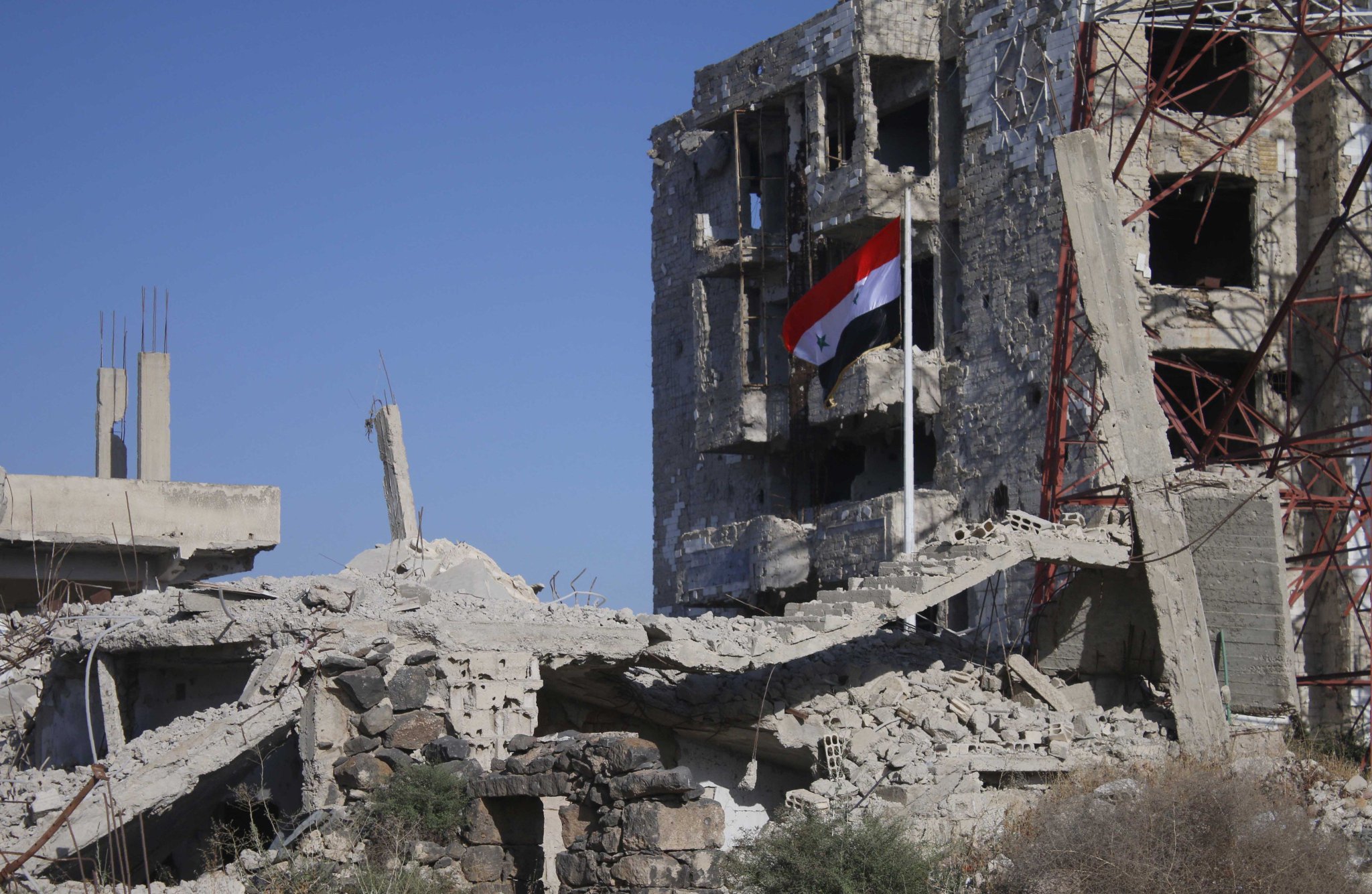
The flag of the Syrian regime on top of the ruins of the buildings in the city of Daraa – 12 July, 2018 (AFP)
Corruption and security complexity hamper implementation:
What is the future of the settlement agreement in Daraa?
The settlement agreement was concluded in Daraa following the military campaign which established the regime’s control over the vicinity of Damascus and northern Homs countryside, thanks to the settlements Russia worked to pass. The campaign caused the displacement of around 234,000 people out of the governorate, according to a UN statistics issued on 11 July, 2018. Thus, opposition factions had to choose between settling their situation, or moving towards the last enclave of the opposition in Idlib.
The majority of the opposition factions in the governorate accepted the settlement, which promised to loosen up the security grip and release the detainees, in addition to withdrawing some heavy weaponry owned by the factions and allowing some of it to the so-called “settlement factions,” which the regime directly engaged in battles fighting the remaining cells of ISIS in the western governorates.
The agreement, which was ratified on 6 July, 2018, was sponsored and guaranteed by Russia. Its most important items revolved around handing over border crossings to government forces, military factions delivering heavy and medium weaponry to the regime, introducing state institutions into areas formerly outside the regime control and giving employees their jobs back. The status of armed men and wanted people shall also be settled. The ones due to compulsory service shall be granted six months before being summoned, arrests campaigns shall be stopped, too, and detainees released.
Most of the items of the agreement related to the residents of Daraa were not implemented by the regime one year after the ratification of the agreement, especially with regard to the release of detainees, settlement of dissidents and wanted persons status, ending the prosecutions and arrests targeting the ones concerned with settlements and resumption of government institutions activity as well as its employees, said the Attorney Adnan al-Masalmeh, member to the Central Negotiations Committee in the city of Daraa.
What is the Central Negotiations Committee and which party is it representing?
The Central Committee was formed following the Syrian regime’s takeover of Daraa in June 2018. Its efforts brought many settlements to thousands of people wanted for various charges in a move to restore calm to Daraa.
The committee consists of opposition figures, some of whom are leaders of the Free Army, civilian activists, sheikhs and jurists, such as Attorney Adnan al-Masalmeh, Sheikh Faisal Abazeed, Sheikh Ahmed Bakirat, Abu Morshed al-Bardan, Engineer Ya’rub Abu Saifan and Mus’ab al-Bardan.
The works of the committee is in Daraa al-Balad, Tafas and Yarmouk basin in the governorate’s rural areas, which are partially out of the regime control.
The committee is concerned with meeting leading figures belonging to the Syrian regime and Russia as the guarantors of the agreement to transfer the demands of the people in order to stop arrests, loosen the security grip, and resolve the issue of detainees and dissidents.
The committee enjoys popular and revolutionary support from the people and the opposition represented by former leaders of the “Free Army”. Former leader Adham al-Karad declared this through a statement signed by a number of leaders and activists he shared via Facebook.
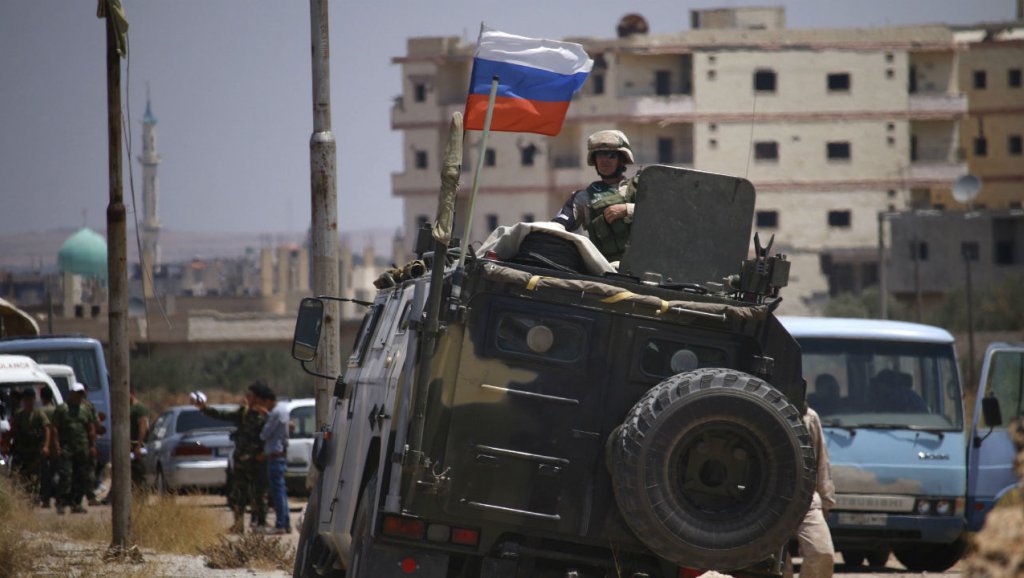
A Russian soldier riding an armored vehicle and watching opponents to the settlement agreement during their evacuation from the city of Daraa – 15 July, 2018 (AFP)
Turning against settlements’ items
“A settlement paper was signed canceling all communications and claims against all those who carried out the settlement and ensuring that their owners are not prosecuted. However, there is a breach of this item by some security agencies and failure to implement the obligations in this regard,” said al-Masalmeh during an interview with Enab Baladi.
“State institutions were not actually introduced into settlement areas in Daraa because of the corrupt bureaucracy headed by a governor who is openly hostile to us,” he says.
According to the member of the Negotiations Committee, the file of employees and professionals was not tackled despite the many promises, “because of the large number of security agencies studying this issue and intervening with this file, in addition to the absence of any national security decision binding them to resume working.” He also declared that “in case they approved something, the process of employees and professionals resuming work would be blocked because of different bureaucratic ways, for no lawyer, doctor, engineer or employee has been able to resume activity until now, and only a few did because of particular circumstances.”
The former governor of Daraa, who held this position during the opposition’s control of the area, lawyer Ali al-Salkhadi, said that the Syrian regime is unable to keep its word and implement the terms of the agreements it has signed. The regime has also lost the ability to make decisions due to Russian and Iranian interference in the region.
Al-Salkhadi declared during an interview with Enab Baladi that the negotiations committees in Daraa governorate are constantly calling the regime permanently to abide by the terms of the agreement and allow employees, lawyers, and others to resume their jobs. However, the regime did not respond to all demands and continued arrest campaigns targeting women, inciting popular congestions and causing the outbreak of a popular unrest in Daraa.
Arrests and forced compulsory service
As for the residence of the governorate, namely dissidents and others wanted for compulsory service, this file remained unresolved, lacking an application that commensurate with the agreement. According to the former governor of Daraa, Ali al-Salkhadi, the regime did not abide by the deadline set by the agreement in favor of the dissidents and the wanted, as they were pushed in the middle of the battles and their families were denied the right to conduct mourning services. Al-Salkhadi stressed that hundreds of members of the League of Hauran are fighting today among the ranks of the regime forces in northern Syria.
According to the former official in the opposition, the regime adopted its old policy in Daraa after having an agreement with the opposition, re-imposing its security grip and arresting most of the people in the governorate, including the ones concerned with settlement on various charges and memos. Some others were even executed while in detention centers, he said.
Several sectors having uncertain situation
Service, educational and economic sectors in Daraa are suffering paralysis, as well as a state of security chaos caused by ongoing attacks on military and security forces, and repeated assassinations targeting civilian and military figures and leaders; thus, demonstrating the regime’s failure to run the region and emphasizing the ongoing popular movement efforts rejecting these policies, according to lawyer al-Salkhadi.
The future of the students is still unknown after the Ministry of Education refused to recognize the certificates students have obtained from the opposition institutions; thus, requiring them to study again and this is what al-Salkhadi considers as a threat to the future of students in the region.
In addition, the regime sought to glorify its symbols again, restore their statues and raise its party slogans in Daraa after taking control over the region, in return for significantly neglecting the economic reality. As a result, the region is witnessing security, institutional, and service corruption, which has manifested into water and electricity crisis, in addition to a crisis of bread, which price doubled along with many basic materials. The inhabitants of the governorate had enough according to al-Salkhadi.
Being represented by its officials, the regime refuses to release Daraa detainees in the security branches, which has been confirmed by former head of the Air Force Intelligence, Jamil al-Hassan, during his visit to the governorate in November 2018 when he linked the detainees’ file to the “Astana” talks, which discuss the political file of Syria, asking the people to forget about Detainees issue until political talks are done.
Al-Salkhadi said that during his visit to Daraa, Jamil al-Hassan made threats, targeting mainly Busra al-Harir and Nahtah in particular, which were blamed for killing of regime soldiers earlier.
Despite all the previous data collected by Daraa during the year of the “settlement” agreement, the future political and security vision of the region is still unclear. Lawyer Adnan al-Masalmeh, member of the negotiations committee in Daraa, describes this situation as “foggy”.
“The reality of the situation is foggy,” he said. “It is unpredictable because of the lack of credibility, the loss of confidence among all parties, and the interventions affecting the people and going beyond us as Syrians.”
Did the regime fail to control Daraa?
Omar Hariri
A year after the “settlement” agreement signed in Daraa province, it is clear that the regime’s control over the governorate is very fragile, for neither assassination nor the security chaos stopped. Armed offences escalate day after day, and this situation displays an exceptional situation in all the “settlement” agreements the regime has concluded whether in Damascus and its vicinity, or in Homs and its countryside, where it has managed to tighten its security grip and “escape” any armed resistance operations carried out against it. However, it has terribly failed in Daraa.
We must first understand that Daraa Agreement is different from other agreements in terms of substantive clauses. It has created a pro-Russian force controlling an important area of the eastern countryside of Daraa that the regime can never break into. We are referring to the fifth legion of Shabab Sunnah forces in control of Busra al-Sham and its vicinity. In addition, the agreement allowed the regime to partially get into the perimeter of Daraa al-Balad in the city of Daraa and the town of Tafas in western countryside, meaning that both areas, and others, are still virtually out of the regime forces direct control.
In addition, the regime has openly allowed the process of recruiting fighters “of the settlement factions” and others for compulsory and reserve services. Thousands of people have joined the regime forces and its security branches after being promised not to participate in any battles outside the governorate. Thus, thousands of former fighters were able to keep their weapons, and obtain security or military cards to facilitate their movement, without forgetting that among these are former leaders as well.
As a result Daraa is faced with a scene consisting of areas outside full control and widespread proliferation of uncontrolled weapons, added to the violations committed by the regime, arrests and evading promises to strengthen services and release of detainees. Thus, this has reinforced the state of congestion and the emergence of groups driven by the desire to “disturb” and “damage” the regime in Daraa, without neglecting repeated talks about multiple loyalties among the various armed parties. Indeed, nowadays, Daraa is witnessing a full-fledged equation for the emergence of armed chaos and assassinations.
These introductions would naturally lead to the current conclusion. Many others may have even expected from the very first moment the agreement was concluded that it would not last long. Daraa turned into a pile of ash being covered under flammable straws, and may now be gradually burning. Therefore, the question is the following: Did the regime purposely mean to reach this result since the agreement was concluded or was it due to shortage of options?
Referring back to the battle that paved the way for a “settlement” agreement, regime forces invaded the eastern countryside of Daraa almost completely, forcing hundreds of thousands of civilians to flee to Quneitra governorate, and trapping tens of thousands of fighters with them as well. The rapid and unexpected collapse of the fronts of the opposition factions, whether by the military crash, as happened in Busra al-Harir or separate agreements, such as Da’el and others, prompted the opposition to yield to negotiation and try to stop the military attack with the least possible losses.
The regime also sought to stop the battle, despite its military superiority, because its continuation and reaching a stage of confrontation with those trapped in Quneitra might put the regime under military pressure from the besieged themselves and under political pressure from the regional environment, which sees its borders burning of displaced people and battles. In addition, the regime would have militarily benefited from stopping the attack and moving to alternative solutions by stopping its human and material losses and obtaining the opportunity to recruit thousands of young people instead of displacing them to the north to join the opposition there.
It is a new equation, in which both sides were winners in some of its items and losers in others, though the regime was the biggest beneficiary at the time and is currently the biggest loser. The previous data were not available in any of the settlement agreements in the other regions. Therefore, Daraa has been distinguished by this result, contrarily to what happened in those areas.
The current scene makes it difficult to predict what may happen in the near future. The escalation and intensification of operations may prompt the regime to take steps to protect its forces and change some aspects of the “settlement” agreement, opening the door again for talks about military or security operations or perhaps a new agreement. However, none of these solutions seem imminent as the entire regime is busy in northern Syria, putting the initiative in the hands of the other side, which is attacking the regime here and there.
The regime failed to take control over Daraa. This result has been drawn by equations that coincided with the moment when the agreement itself was signed and with the regime’s vision and analysis of its forces at the time and the future of Daraa later, which leaves us with the biggest question about the international and regional role in drawing this outcome.
Opinion poll: The opposition’s weapons have reduced the power of the regime in Daraa.
Enab Baladi conducted an opinion poll in which it asked the following question: According to you, why has the Syrian regime been unable to take full control of Daraa after the settlement?
Between the two reasons raised by Enab Baladi, the 689 poll respondents considered that the the Daraa’s settlement factions’ possession of weapons after the settlement is the reason why the regime has not tightened its grip over Daraa, as in other areas subject to similar settlements.
59 percent of the respondents voted for this option, compared to 41 percent who considered that the Russian role in the governorate has reduced the regime’s security control.
“The reason is the terms of the settlement that allowed the rebels to keep their weapons, in exchange for allowing the regime to control the border crossings and stop the bombing,” said Abu Khaled, one of the respondents, commenting on the poll.
Iyad Mekdad considers that “the remaining of weapons (in the hands of the factions) will destroy the remnants of the opposition,” adding that “the assassinations of civilians or soldiers are not part of the state’s calculations and do not affect it, even if the most prominent figures in the south are assassinated. They will rather be exploited in the future for absolute control.” He considered that” the element of time is in favor of the state.”
In contrast, the respondent Ahmad Abul Izz had a third opinion, pointing out that “Daraa residents’ sense of determination and rejection of humiliation” has reduced the power of the regime. This opinion was also supported by the respondents Ahmad Rashid and Ahmad Nibnib, who considered that “the existence of honorable people in Daraa will achieve the people’s victory over the tyrants.”
Security chaos in Daraa… “Ask the Russians”
Some areas of Daraa Governorate have witnessed a security chaos during the first half of 2019, which included repeated assassinations, especially in July, in which the number of assassination operations and attempts reached 30 cases, killing 16 people, injuring 11 others while 3 cases survived, according to Daraa Martyrs Documentation Office. This has raised many questions about Russia’s role in the region, which has been the sponsor of the settlement agreement in the south.
Russia has worked hard to avoid a military clash with the militant factions and resorted to the reconciliation system, as in other areas such as Eastern Ghouta and the northern countryside of Homs. It has made many pledges to civilians and faction fighters in return for their acceptance of the settlement and avoiding fighting.
It has also worked to create loyal forces in Daraa under the name of the 5th Corps, which was formed at the end of 2016 under Russian orders to be its arm on the ground, under the leadership of the former leader of Lions of Sunna Brigade in Daraa, Ahmad al-Odeh.
A member of the Syrian High Negotiations Committee (HNC), Brigadier Ibrahim Jabawi, said that Russia has disengaged from the settlement agreement in Daraa and has not prevented the entry of the regime forces into cities and towns and the dragging of young people to compulsory military service.
Jabawi considered in an interview with Enab Baladi that the situation in the south may herald a violent explosion if Russia does not realize the matter and return to its commitments. “This raises the regime’s fears as well as Russia’s discomfort,” he said, pointing out to the need for Russia’s intervention to prevent the dragging of young people to compulsory military service, lift barriers, and allow the entrance of aids.
Russia in Daraa: Failure or Disregard?
After the settlement, the areas in Daraa have been divided into two parts, areas under the Russian wing, represented in the 5th Corps, which is spread in the city of Busra al-Sham and some nearby villages in the eastern countryside of Daraa, and other areas that are completely out of control, in which arms are widespread, as in the areas of the western countryside.
In view of the recent incidents, they have all taken place in the areas of Daraa and the western countryside, while in the areas of the 5th Corps there have been no assassinations, arrests, violations or entry of the regime forces into the region within a year of settlement, raising questions about the matter and absence of Russia’s efforts to intervene in the rest of the regions.
Enab Baladi raised a question about the current situation in the region and the Russian positions towards it to the former HNC Vice Chairman Khaled Mahameed, who played a major role in the settlement agreement in Daraa, but he refused to answer, being “out of the equation,” as he put it, and only said “it is better to ask the Russians.”
A well-informed source in Daraa, who asked not to be named for security reasons, told Enab Baladi that “we have witnessed several experiences in Daraa, including those in which the Russians have failed “miserably” as is happening now in some areas, and those in which they have succeeded and have been free of any operations or violations, as in the areas under the control of the pro-Russia 5th Corps, which has managed to take full control over its areas of influence.” The source pointed out that the popular incubator in the areas of the Corps is “at ease” unlike other areas.
The source also pointed out that looking at the rest of the areas that have seen settlements such as the northern countryside of Homs and Eastern Ghouta, there is a deliberate intention to follow the theory of chaos in Daraa and consolidate its presence by some parties, especially since the Syrian regime is capable of storming some areas and control their security, and since Russia is capable to repeat the experience of the 5th Corps in other regions.
The source explained that attempts to establish a corps in the western countryside had previously failed, believing that Moscow prevented the corps from leaving the area and taking control over the entire Daraa. Nevertheless, its goal is still unclear.
Meanwhile, a member of the Negotiations Committee in Daraa, Adnan al-Masalmeh, considered that there are those who are working on mixing the cards and destabilizing the situation in the south, by the opponents of the settlement agreement, whether via some of the regime’s organs or by oppositionists.

Members of the Russian Military Police at Nasib Border Crossing with Jordan in Daraa Governorate – July 7, 2018 (AFP)
Where is Iran?
While talking about the Daraa file, the Iranian side cannot be overlooked, especially since Israel has stipulated to Russia the withdrawal of Iranian forces in exchange for allowing al-Assad’s forces to control the southern borders. According to statements by Russian President’s Special Envoy to Syria Alexander Lavrentiev, in August 2018, the Iranian forces withdrew from their positions in southern Syria for 85 kilometers at the request of Israel, in order not to disturb the Israeli leadership.
However, recent events in Daraa have opened the door again for talks about Iranian infiltration in the region and the presence of its militias, amid Russia’s carelessness, according to the member of the Syrian HNC, Brigadier Ibrahim Jabawi, who considers that Moscow has turned a blind eye to the Iranian infiltration in order to push Israel to attack Iranian locations in Syria, being Russia’s political, military, and economic rival in Syria.
Jabawi considered that Iran has great influence in the southern region and is seeking a demographic change in the region by getting rid of more people from the region through providing financial inducements to them. However, he stressed that the culture of the people of the south will not allow the Iranian expansion.
Over the past years, Iran has worked on the non-official recognition of its presence in Syria, but has always been saying that it is supporting the regime only with advisers, while it is impossible to confirm the presence of Iranian military bases in the south, especially in case of their existence, they will be targeted by Israeli aircrafts, as has been the case in several areas in Syria, like Homs and the outskirts of Damascus. Thus, Iran has only recruited local officers affiliated to it.
The most prominent attacks on the regime forces after the settlement of Daraa
Targeting Russian troops for the first time
Russian forces were subjected to the first bombing attempt with an improvised explosive device by unidentified persons in the eastern countryside of Daraa on July 13, which caused no damage.
“An improvised explosive device was detonated on the road of a Russian military police patrol in Daraa Governorate, on the road between Busra al-Sham and the village of al-Sahwah,” Sputnik news agency quoted the Head of the Russian Reconciliation Center in Syria, Major General Alexei Pachin.
Pachin considered that the bombing was an attempt to increase the gravity of the situation.
The most violent attack against the regime forces
Five lieutenants were killed and 16 other officers were injured in an explosive device attack on a shelter bus belonging to the 4th Armored Division on the western road of Daraa between al-Maftara and the town of al-Yadudah on July 17, allegedly carried out by “terrorists” according to government media outlets.
Enab Baladi’s correspondent in Daraa said at the time that the information indicates that the shelter includes officers and settlement members from the countryside of Damascus, followed by another attack within hours that targeted an officer with his wife and son, near the town of al-Shaykh Saad, west of Daraa. The attack was also attributed to unknown militias. Following this attack, the regime’s forces closed the road leading to the western area of Daraa.
ISIS reappears
A suicide bomber blew himself up with an explosive belt on July 27, targeting regime forces in the village of Melihit al-Atash in the countryside of Daraa. There had been different news about the number of the dead an injured people. According to the official news agency SANA, the attack resulted in a number of injured people, while Daraa News mentioned on Telegram that the attack caused the death of six people.
ISIS claimed responsibility for the bombing, and Amaq News Agency quoted a security source as saying that the incident caused the death of eight people and the injury of 10.
This was the second operation for which ISIS had claimed responsibility since the regime forces took control over its areas of influence in the governorate in August last year. ISIS announced on June 4 the targeting of military vehicle belonging to the regime’s forces on the road between Naamer and Khirbet Ghazaleh, northeast of Daraa, by detonating two explosive devices that killed three people.
Outburst of al-Sanamayn
Al- Sanamayn has been witnessing escalating clashes between militias from the city and officers of the regime forces since last May to date. Clashes have started following the arrest of a brother of a former opposition leader and his cousin during a raid that killed two regime officers and injured the head of the criminal security detachment.
The city had also been besieged for eight days, during which the regime prevented the entry of food and services and carried out thorough security check at the checkpoints. The siege was then ended under Russian pressure, before things turned to direct confrontation.
A microbus carrying two staff members working in al-Sanamayn Military Hospital, in addition to the driver, were kidnapped by unknown persons and taken to an unknown destination. Clashes continued with regime forces’ checkpoints, which responded by firing residential neighborhoods on July 18, killing two children.
As Enab Baladi’s correspondent reported on 31 July, the two checkpoints of al-Souq and Qiytah in the city witnessed clashes, amid reports of deaths and injuries from government forces, while the Syrian regime did not inform about the incident and the losses in its forces.

Regime forces soldiers raising victory sign next to the flag in Tall al-Harrah on the highest hill in the southeastern governorate of Daraa (AFP)
if you think the article contain wrong information or you have additional details Send Correction
النسخة العربية من المقال
-
Follow us :












 A man on his motorcycle behind him demolished buildings in southern city of Daraa - 2 August, 2018 (AFP)
A man on his motorcycle behind him demolished buildings in southern city of Daraa - 2 August, 2018 (AFP) 





 A
A
A
A
A
A
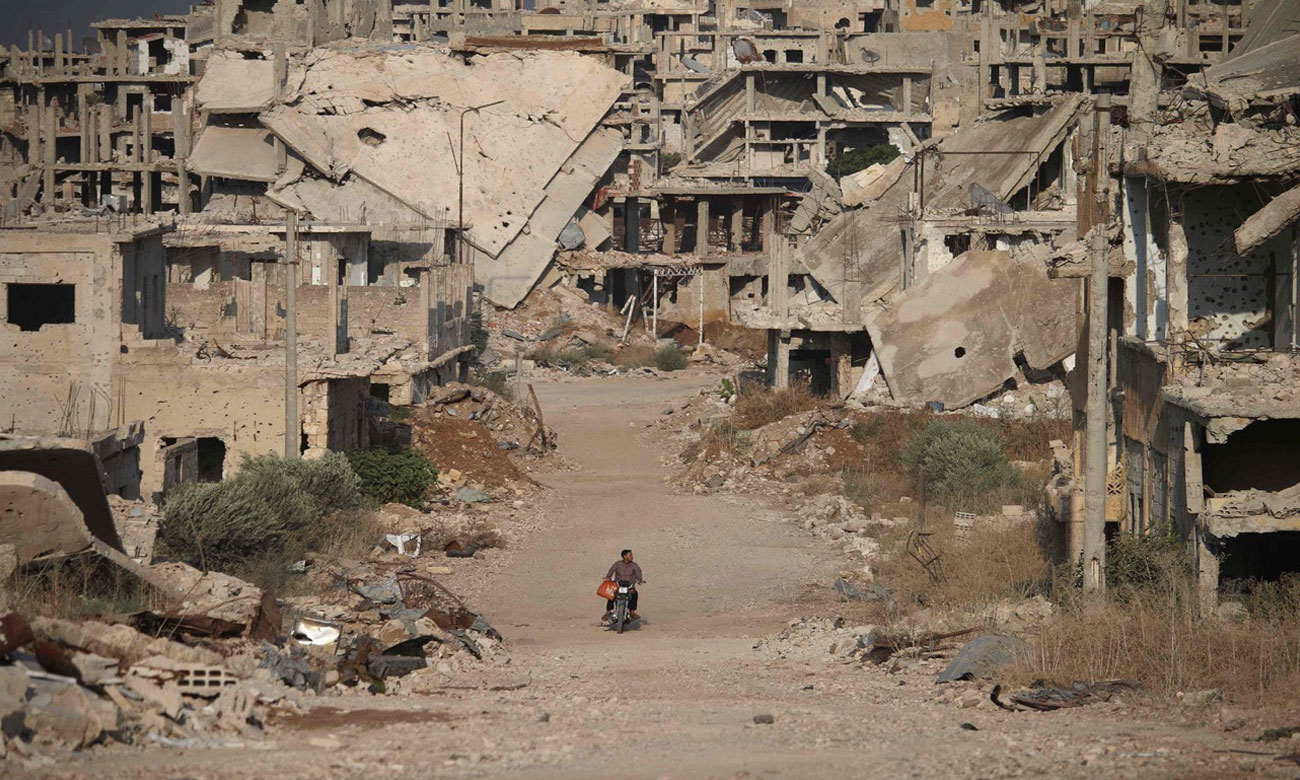
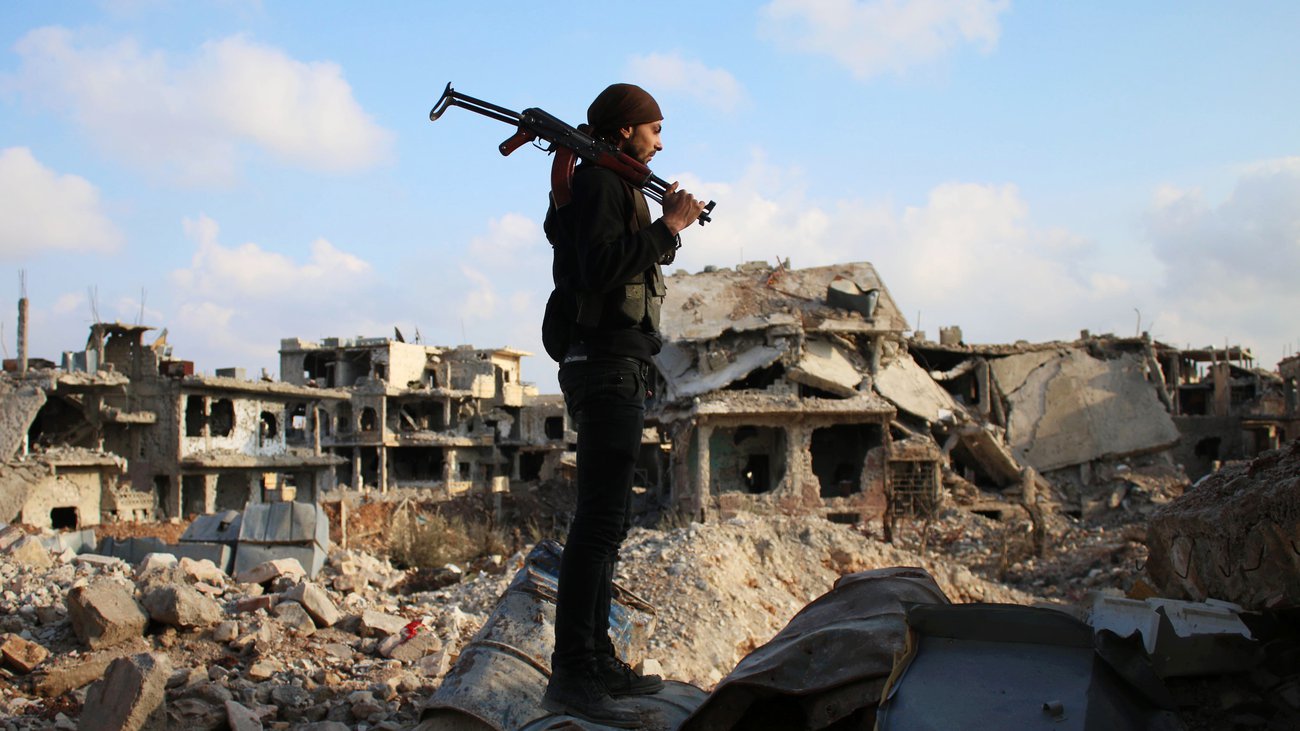
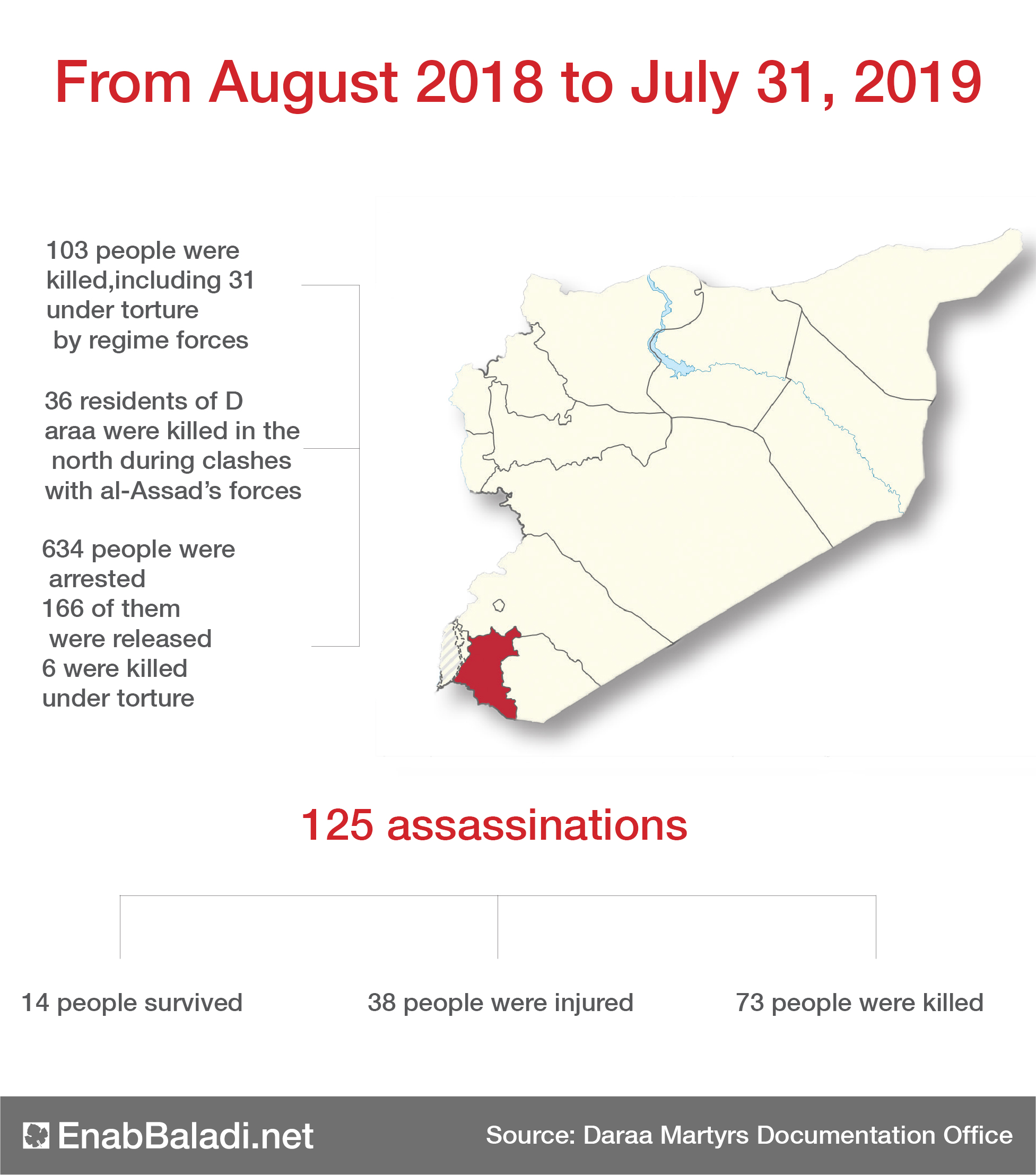





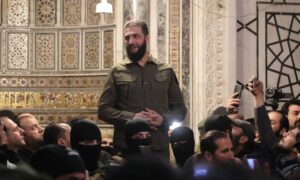
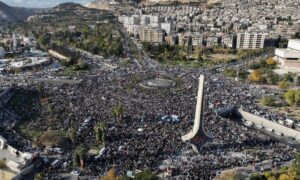
 More In-Depth
More In-Depth